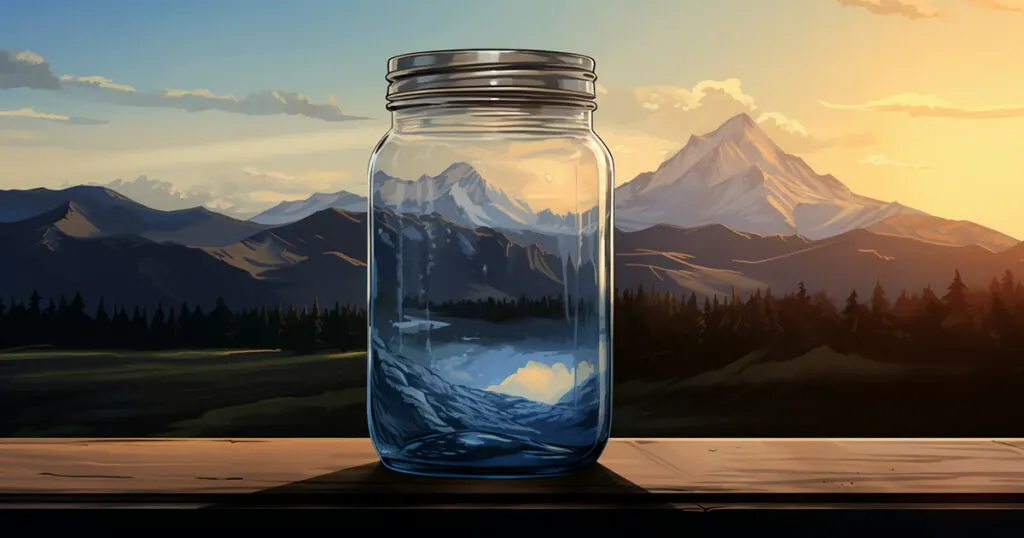Water is a fundamental necessity of life, essential for drinking, cooking, and cleaning. While water itself doesn’t spoil or rot, it can become contaminated, making it unsafe for consumption. Understanding the various ways water can become contaminated is crucial for maintaining health and well-being. Here, we delve into seven common contamination risks and how they can affect water quality.

Microbial Contamination
Microbial contamination is one of the most common risks associated with water safety. It occurs when water is infested with harmful bacteria, viruses, parasites, or other microorganisms. Consuming microbial contaminated water can lead to a variety of diseases and health conditions, some of which can be severe or even fatal.
This type of contamination is especially prevalent in water that hasn’t undergone proper treatment or purification, such as water from lakes, rivers, or poorly maintained wells. It underscores the importance of sourcing water from safe, treated supplies and ensuring that water purification systems are functioning correctly and maintained regularly.
Chemical Contamination
Chemical contamination arises when harmful chemicals, including heavy metals, pesticides, and industrial solvents, infiltrate water sources. This can occur due to industrial runoff, agricultural runoff, and pollution. The presence of these chemicals in water can pose serious health risks, affecting various bodily systems and organs.
The impact of chemical contamination can range from acute to chronic health conditions, depending on the type and amount of chemical present. Regular monitoring and testing of water sources are crucial to detect chemical contaminants early and implement necessary interventions to prevent exposure.
Algae Blooms
Algae blooms are overgrowths of algae in water bodies, often resulting from nutrient pollution. These blooms can produce toxins that contaminate water, making it unsafe for consumption. Algal toxins can lead to a range of health issues, including liver damage and neurological effects, depending on the type of algae and the toxins they produce.
Addressing nutrient pollution and managing water bodies effectively are essential steps in preventing algae blooms and the subsequent contamination of water. Monitoring water quality and avoiding the consumption of water from sources affected by algae blooms are also crucial for health protection.
Stagnation
Stagnation occurs when water is left standing in containers or other reservoirs for extended periods. Stagnant water can become a breeding ground for bacteria, parasites, and other pathogens. It can also accumulate impurities from the surrounding environment, leading to contamination.
To prevent contamination from stagnation, it is essential to store water in clean containers and replace it regularly. Ensuring proper circulation and turnover of water in storage tanks and reservoirs can also help maintain water quality and safety.
Improper Storage
Improper storage of water can lead to contamination if the water is kept in containers that are not clean or are made from materials that leach harmful substances. For instance, water stored in containers with BPA can become contaminated with this harmful chemical, posing health risks.
Using clean, food-grade containers for water storage is crucial to prevent contamination. Additionally, being mindful of the materials used in containers and opting for those that do not leach harmful substances can help maintain water safety.
Radiological Contamination
Radiological contamination of water can occur due to the presence of radioactive substances. These substances can be naturally occurring or result from human activities, such as nuclear accidents. Consuming radiologically contaminated water can lead to serious health conditions, including cancers.
Monitoring water sources for radiological contaminants and implementing protective measures in areas with elevated radiation levels are essential for preventing exposure to radioactive substances. Accessing water from safe and monitored sources is also crucial to avoid radiological risks.
pH Imbalance
Water with a very high or very low pH can be corrosive and may leach metals from pipes and fixtures. This can lead to elevated levels of metals like lead and copper in the water, which can pose health risks. A pH imbalance in water can also affect its taste and appearance, making it unsuitable for consumption.
Maintaining a balanced pH in water is crucial to prevent corrosion and metal leaching. Regular testing of water pH and implementing corrective measures, such as adjusting water treatment processes, can help maintain water quality and safety.
If you’re storing water at home, what could be the biggest concern and how would you know?
When storing water at home, one of the biggest concerns is the potential contamination of the water, which could be due to microbial growth, chemical leaching from storage containers, or the infiltration of environmental contaminants. Contaminated water can pose serious health risks, so it’s crucial to store water properly and monitor its quality regularly.
How to Identify Concerns:
- Taste and Odor:
- If the water has an off taste or odor, it could be contaminated. This might indicate the presence of bacteria, algae, or other contaminants.
- Color and Clarity:
- Water that is discolored or has particles floating in it may be contaminated. Clear water is generally a good sign, but some contaminants are colorless and odorless, so it’s not a definitive indicator of water quality.
- Container Condition:
- If the container is damaged, leaking, or made from unsafe materials, the water inside may be unsafe. Containers made from food-grade materials are the safest for water storage.
- Algal Growth:
- The presence of algae in stored water is a sign of contamination. Algae can produce toxins and make water unsafe to drink.
- Mold and Bacteria:
- If you notice mold or slime in the water or on the container, it’s a sign of bacterial contamination.
How to Address Concerns:
- Use Proper Containers:
- Store water in food-grade, BPA-free containers to prevent chemical leaching.
- Keep Containers Sealed:
- Ensure that storage containers are sealed properly to prevent contamination from dust, insects, and other environmental contaminants.
- Store in a Cool, Dark Place:
- Exposure to sunlight can encourage algal growth and degrade the container material, so store water in a cool, dark place.
- Regularly Rotate Stored Water:
- Replace stored water periodically to ensure freshness. Use the old water for non-drinking purposes like watering plants or flushing toilets.
- Boil or Treat Water if Unsure:
- If you suspect that stored water may be contaminated, boil it before use or treat it with water purification tablets or a water filter.
- Regular Inspection:
- Periodically check the stored water and its container for any signs of contamination or degradation.
By being vigilant and following proper storage practices, you can mitigate the risks associated with storing water at home and ensure you have access to safe, clean water when needed.
What are good methods of home storage of water?
Storing water at home is crucial for emergency preparedness, and it is important to do it correctly to maintain the quality and safety of the water. Here are several effective methods for home storage of water:
Use Proper Containers: Opt for food-grade plastic containers, designed to store food and water safely, ensuring they are BPA-free to avoid chemical leaching. Glass containers are also suitable as they don’t impart any flavor to the water and don’t leach chemicals, but they are breakable. Stainless steel containers are durable and safe but should not be used to store chlorinated water as it can corrode the steel.
Clean Containers Before Use: Wash containers with soap and water and rinse them thoroughly before filling them with water to prevent contamination.
Use Safe Water Sources: Fill containers with water from a safe and clean source, such as municipal tap water, which is usually treated and disinfected.
Store Water in a Cool, Dark Place: Exposure to light and heat can promote the growth of algae and bacteria and can degrade the container material. A cool, dark place like a basement or a pantry is ideal.
Seal Containers Tightly: Ensure that the containers are sealed properly to prevent contamination from dust, insects, and other environmental contaminants.
Label Containers: Clearly label containers with the date of storage to aid in rotating the water supply and using the oldest water first.
Rotate Water Supply: Periodically use the stored water and replace it with fresh water to maintain its quality. A general guideline is to replace stored water every six months.
Store Enough Water: The general recommendation is to store at least one gallon of water per person per day for at least three days, accounting for drinking and basic hygiene needs.
Consider Water Treatment: If storing water from a non-treated source, consider treating it with water purification tablets, bleach, or a water filter to kill any pathogens.
Use Large Water Storage Tanks: For long-term water storage, consider using large water storage tanks or barrels, which are ideal for emergency preparedness.
Keep Accessibility in Mind: Store water in a location where it can be easily accessed in case of an emergency but is also safe from potential contamination and environmental factors.
How long will water stay good when stored?
The shelf life of stored water can vary depending on several factors including the cleanliness of the container, the source of the water, how it’s stored, and whether it has been treated or purified. Here are some general guidelines:
1. Commercially Bottled Water:
- Commercially bottled water, if unopened and stored properly, can have an indefinite shelf life, according to the U.S. Food and Drug Administration (FDA). However, manufacturers often put a two-year expiration date on bottles for quality reasons, not safety.
2. Tap Water:
- Tap water stored in clean, food-grade containers and kept in a cool, dark place can generally be stored for six months. After that, it may start to taste stale or flat due to the loss of dissolved oxygen, but it is still safe to drink.
3. Treated Water:
- If you are storing water from an untreated source and have treated it with bleach or water purification tablets, it can be stored for about six months, provided it is kept in a cool, dark place in a properly sealed container.
4. Water in Large Storage Tanks:
- Water stored in large tanks or barrels, especially if treated with a long-term water preservative, can be stored for up to five years. Regular inspection is necessary to check for container integrity and any signs of contamination.
5. Water in Emergency Water Pouches:
- Emergency water pouches, often included in survival kits, usually have a shelf life of about five years.
Best Practices for Long-Term Storage:
- Store water in a cool, dark place away from chemicals and solvents.
- Use food-grade, BPA-free containers.
- Rotate the water supply every six months, using the stored water and replacing it with fresh water.
- If unsure of the water quality, treat it before use by boiling, filtering, or using water purification tablets.

Jada
Monday 23rd of October 2023
What about well water? Does that need to be treated?
Rob Benson
Monday 23rd of October 2023
Well water can be a reliable source of drinking water, but whether it needs treatment depends on several factors. Depth of the well, bacteria, viruses, parasites, nitrates from fertilizer, heavy metals like lead or arsenic, radon, and pesticides. On our well in Colorado the depth of the well is over 600ft deep. I'm not worried about any of the contaminants ... but you never know.